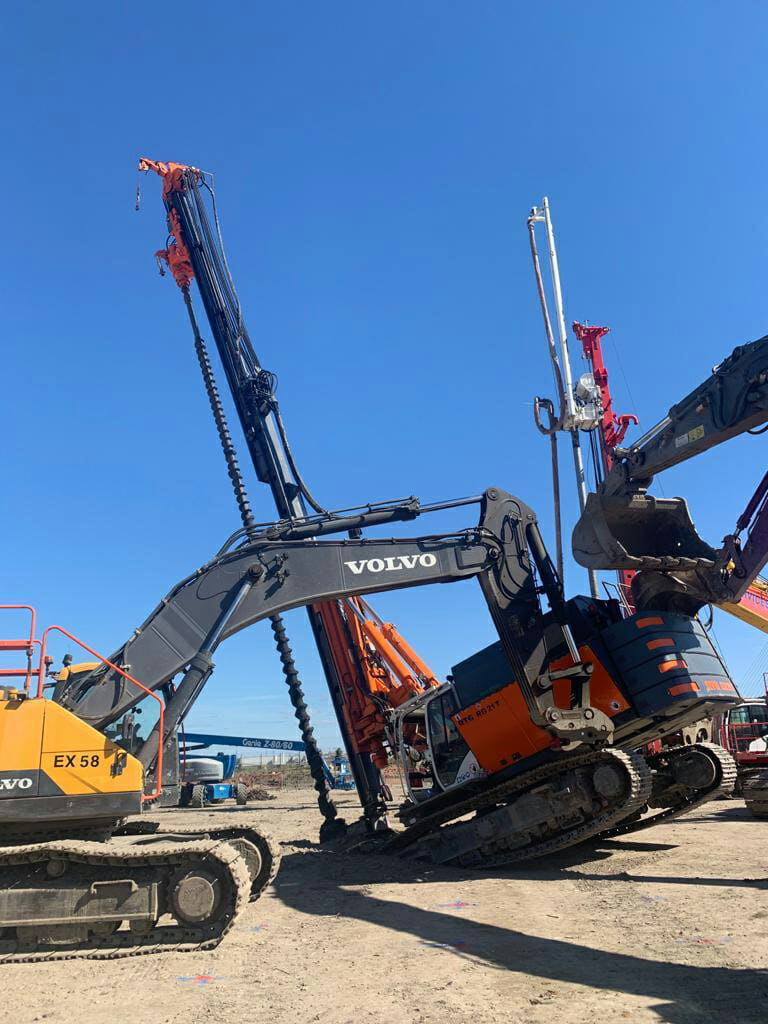
As we all know, working platforms are there to provide a safe and durable surface from which piling rigs, cranes and other heavy plant can operate. Their design obviously varies, according to many factors such as underlying soil conditions, loading requirements and the type of soil present. The Working Platform Certificate (WPC), which accompanies the working platform, is there to confirm that the working platform has been properly designed, constructed and tested in accordance with the design, and will be regularly inspected and adequately maintained to ensure its integrity. This work is normally completed well before the Piling Contractor arrives on site. The certificate requires the details of the designer and the signature of the Principal Contractor and must be handed to the Piling Contractor before piling (or other work) commences on site.
Embedded in our operations, few would argue against them being an essential tool to help avoid catastrophic incidents and the system is now used industry wide and not just by members of the Federation of Piling Specialists (FPS). However, in the year to-date, the FPS is aware of more than four specialist geotechnical rigs either overturning or coming very close to toppling.
Given the reassurance and confirmation the WPC should offer to all involved, this number of incidents in a single year is incredibly troubling and begs the question why.
At first thought it would be reasonable to assume that the incidents are a direct result of contractors responsible for the working platforms cutting corners with the platform thickness, no working platforms or wrongly designed working platforms. However, a closer look at the causes of these incidents and you find it is none of these reasons.
In fact, the causes of the incidents this year have been:
- Working platforms installed on top of engineered fill that has not been installed correctly – the platform on top is good but what’s underneath is not
- Holes dug in platforms to remove obstructions that have not been properly re-instated, resulting in the same aforementioned issue
- Surface drains and shallow utilities installed in the ground beneath the platform, but not considered in the platform design
- Extent of working platform not clearly identified on the permit or too limited in extent resulting in the specialist working on what they thought was a working platform, but was not
With these causes in mind, we must all remember that thorough and professional operation of the working platform certificate process is serious. The working platform requires more than simply asking a designer to do a working platform design, installing it and signing a permit. It is absolutely critical that the working platform design is not only checked but also challenged, as too should the installation and when change does occur, then the potential new risks need then to be considered and factored into the design as appropriate. The amount and extent of testing needs to be appropriate with consideration to testing at the perimeter of the platform, after holes are dug through the platform etc.
All parties involved with the working platform have a part to play in their design and specialists asking questions about the working platforms should be treated as a positive thing. After all it is the specialist operatives are the ones most at risk should anything go wrong.
With the implications of an overturned rig potentially catastrophic to life and limb, as well as any incident, no matter how serious, also damaging to the reputations of projects, companies and the wider construction image, working platforms must be taken seriously. The WPC should actually mean something and provide the confidence that the working platform’s design and installation is not only fit-for-purpose, but that it has been constructed with all known variables factored in. It is also a live document, requiring regular inspection especially when conditions on site change – for example – what starts off as a 600mm thick mat can quickly be reduced when lots of vehicles travel over it, particularly in wet weather, and diggers are scraping up spoil and any overspill concrete! If working surfaces are to continue to be fit for purpose, levels and thicknesses of the mat should be checked on a regular basis throughout the project duration, so don’t just accept the certificate – challenge it and challenge it regularly!
Author: Philip Hines FPS
